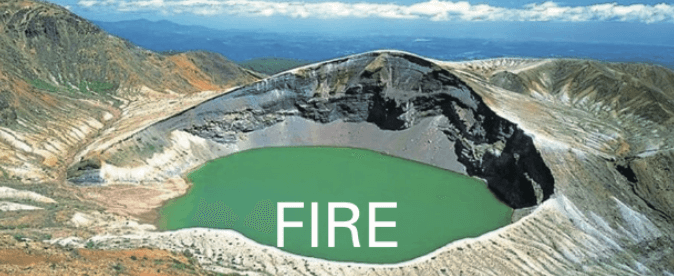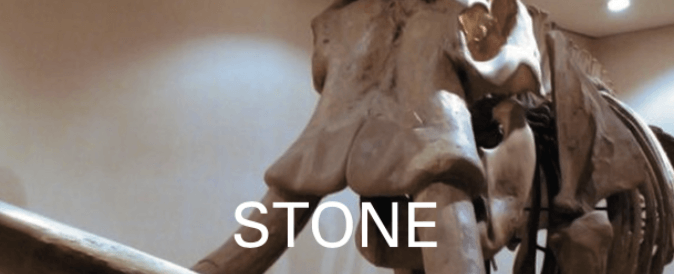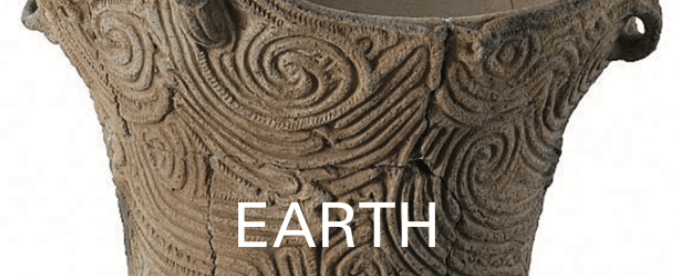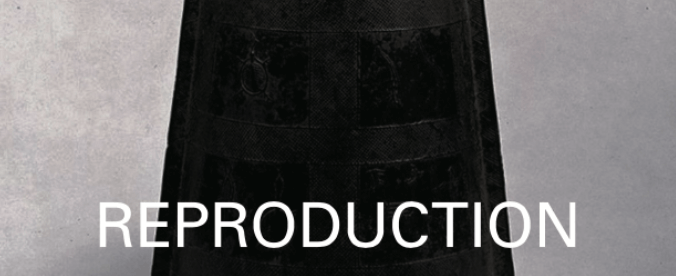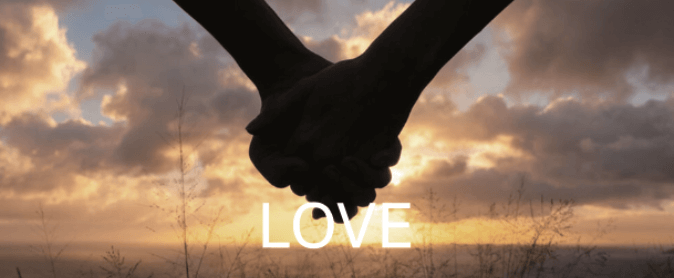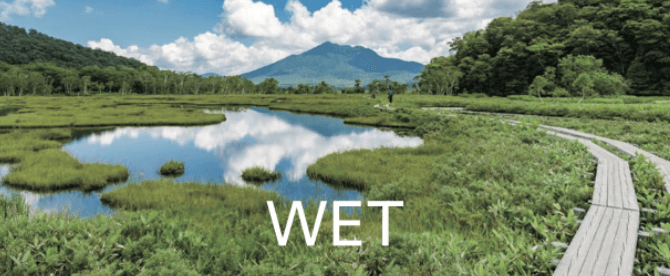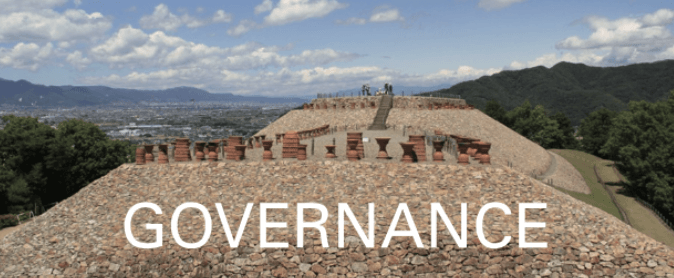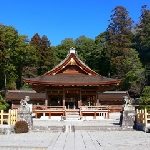
“Worshiping the Great Land Master in ancient Japan” -This shrine enshrines Okuninushi no kami, as the god of nation-building and development farming. Around the 2nd Century BC, bronze and iron ware were introduced to Japan. Those wares required mercury and limonite. This area had those resources. This knowledge and engineering also developed farming and built nations in ancient Japan.
The object enshrined here is Mt. Mikageyama. The public is still prohibited from entering this shrine. Okuninushi no kami, a deity, developed the gorge between Kameoka and Arashiyama, which was the ancient lake, and then left for Izumo Province, Shimane Prefecture.
This shrine used to be in Tanba Province. The “Tan” of Tanba Province is a precious ore containing mercury, since ancient times. Izumo means “rising cloud.” It is said around this shrine that the cloud of Izumo originated from the sea of clouds of Mt. Mikageyama.
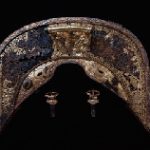
This museum introduces the history of Yamato, which is the cornerstone of Japanese history, through artifacts excavated in Nara Prefecture. A good example is Fujinoki tomb, from the Ikaruga Town of Ikoma district , which was discovered as an unearthed tomb in 1985.
The gold and bronze saddle excavated there has Palmetto (Buddhist arabesque pattern) motifs, such as Chinese phoenix, dragons, demon masks, and monster fish and lions. Horses that came to the Japanese Islands about 1600 years ago were decorated with golden harnesses as a symbol of authority.

The museum introduces Otsu, which has been an important hub since ancient times, and also possesses excavated articles from the ancient site. The 6th century Sueware pot, from the latter Tumulus period (the 3rd – 7th century), was excavated from Fukuro Tombs.
In the center of the ceiling, there is Haso, a small hole for musical instruments and sake bottles. Around the haso are two shrine maidens, a buck, a doe, and a deer hunter, with a bow and arrow, aiming at the deer. Sueware came from the Korean Peninsula in the 5th century.
Fukuro Tombs is located in the area of Nishikori and Sakamoto Otsu City, at the east foot of Mt. Hiei, where there is a densely populated site of tombs from the latter Tumulus period.
It is also the hometown of Ano shu, a group of stone wall craftsmen, who built castle walls in the early modern times.
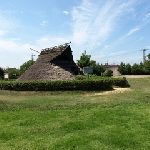
“You see Continental style arriving in the Yayoi Period” -This site is a large settlement, 500 meters long and 180 meters wide. The settlement developed during the late Yayoi period, 1st-3rd Century AD. The Continental style, large-scale cultivation, was done with the participation of continental and peninsula immigrants, using stone axes and ironware.
The museum introduces a large amount of earthenware and octopus’s pots that have been excavated, as well as bronze mirror pieces. It conveys the flow of life’s stability, through agriculture and fishing, and the transition to an ancient nation.
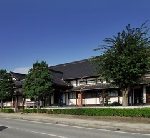
This museum exhibits Hichireikyo, the bronze mirror with 7 small bells on the periphery, excavated from Kumobekurumazuka Tomb, the only excavation in Hyogo Prefecture. This tomb was built in the end of the 5th century. Excavations include Kagamiita, a part of a Japanese horse bridle, which have bells as decoration.
These are extremely important properties as clues to understand the ancient history of the region. This museum introduces this city’s early modern time, including Tamba Sasayama, a castle town, and an exhibition of arms and armor.
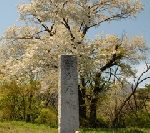
The site of Samegaojo Castle was on a low hillock at an altitude of less than 200m. Uesugi Kenshin (1530 – 1578), the feudal lord of Echigo Province, built it for the defense of the Shinano area of Nagano against the invasion of Takeda Shingen (1521 – 1573), the feudal lord of the Kai Province. After Kenshin’s death, it suffered the Siege of Otate, when the nephew and adopted son of Uesugi Kenshin fought each other for Kenshin’s inheritance.
This hillock has the Hida Ruins, which was the largest settlement in the Joetsu region of Niigata, in the latter part of the Yayoi period (the 4th BC – 3rd century). The Kanoundaira and Tenjindo tombs, behind the Hida Ruins were expanded in the 6th century. And there is the Hidajinja Shrine, which was founded in the beginning of the Heian period (794 – 1185) and worshiped in by Uesugi family.
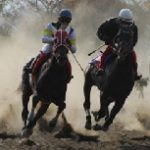
Mochizuki town has a history of having a ranch in the direct control of the Imperial court in Sakudaira, during the Heian period (794 – 1185). This town is known as the Komanosato, the village of the horse ranch.
This town holds a local horse race, on November 3 (Japanese Culture Day), every year, which is done on a 400m course. Local horses and horses from other prefectures, ponies, farm horses and thoroughbreds participate. Qualifying races in the morning and heated final rounds in the afternoon, are held.
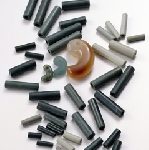
“Izumo, the Silicon Valley of the Yayoi period” —You can encounter National Treasures from the Kojindani Site, in the middle of Yayoi period, around 2000 years ago. It’s great artifacts include 358 bronze swords, 6 bronze vessels (Dotaku), and 16 bronze halberds. Those were used in agricultural festivals and were supplied to the“nation states”from Izumo.
The sacred device was an integrated circuit, IC, that connects harvest and labor. This museum introduces the origin of the Izumo Kingdom, along with a model of the largest shrine building in Japan, the ancient Izumo Taisha main shrine. The museum shows a large number of excavated bronze ware from the Yayoi period (the 4th BC – 3rd century), and the gold and silver swords that decorated the powerful family in the Izumo Province.
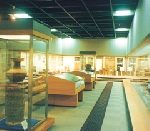
The Chugoku Mountains consist of old strata that contain a lot of iron. The Miyoshi Basin was a developed area from ancient times. It is one of the most crowed area of tombs in Chugoku province, with more than 4000 tombs. They make up one third of tombs in Hiroshima prefecture.
This museum exhibits excavated items such as Kudadama, tube balls made of jasper, small balls made of glass, Yariganna, an iron wood tool to smooth boards, and iron swords. The museum introduces the Miyoshi Basin’s historical development as a transit point in the Chugoku Mountains, along with the view of ancient Hiroshima prefecture.

“Honoring Olympic medalists and Ancient cultivators” – This museum is located at the Okayama Prefecture Athletic Stadium, which praises Olympic athletes from Okayama and introduces the Tsushima site, because this Stadium is built on a site from the early to later Yayoi period, 4th Century BC – 3rd Century.
The Tsushima site are the ruins of the era when full-scale rice paddy cultivation began.
-Rice existed in the Jomon period (16,000 years ago – 3,000 years ago) and there were paddy fields in its late period. In the Yayoi period (the 4th BC – 3rd century), ridges for adjusting the details of the plot were made to improve the efficiency.
-And tools were improved, productivity was increased, and circular moat settlements were established, leading to the development of a large-scale base village. Eventually, a large-scale mound tomb was built and exchanges with various places became popular.
The modern Olympic Games is a symbol of civilization that cultivates the sustainability of society. Pioneers of the ancient and modern days at this museum are waiting for you.
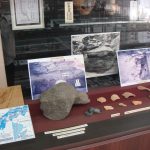
This museum exhibits archeological materials of the Paleolithic Period, the Jomon period (16,000 years ago – 3,000 years ago), the Yayoi period (the 4th BC – 3rd century), and Tumulus period (the 3rd– 7th century). Maruyama Tombs, in Kanonji City had a buried, hollowed-out, boat shaped sarcophagus, made of welded tuff from Mt. Aso, which was at the horizontal stone chamber in the early stage.
That indicates the possibility that the culture from abroad took root in this area, on the west coast of the Okushi Peninsula, which protruded into the Seto Inland Sea. This area’s sea route had continuous trade and human connections with Kyushu Island.

Fukuoka City, has flourished as a gateway to external negotiations since ancient times, and has over 1000 ruins. The Permanent exhibition of this center focuses on the Country of Na, a country that existed within Japan during the Yayoi period (4th century BC – 3rd century) and the period of the largest trading port in Japan, the “Medieval City Hakata”.
The Sword with a ring pommel, with a dragon motif, has two dragons facing the handle of the iron sword, and an elaborate relief-like pattern made of gilt bronze. This is similar to the Long sword ornament of Kaya, an area of iron production, in the southern part of the Korean peninsula.
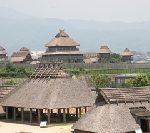
“The Largest site from the Yayoi period” -This site continued for 700 years of settlements since 3rd Century BC. Visitors can see the center of the “nation state” from the Yayoi period, where relics found, including copper/bronze knives and decorative glass beads, show the extremely high academic value of this site.
This park is a monumental park of a 117 ha. Moat Encircled Settlement (Village) in the Yayoi era, 2,000 years ago. It consists of three zones: Moat Encircled Village Zone, Ancient Field Zone, and Ancient Forest Zone.
The Moat Encircled Village Zone has the north inner wall, where the huge shrine building is restored, the south inner wall, where the residences of the ruler are restored, and the restored west side building, which managed the warehouse and the market. The Ancient Field Zone reproduces the landscape of ancient rice paddies in the summer and wheat fields in the spring.
The state of Yoshinogari at that time accumulated foreign affairs and trade with China and learned the rituals of the Chinese dynasty, the protocol of the guest ceremonies, castle structures, and calendars. The restored architecture shows its formality.
